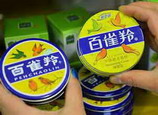
With most visual effects companies in Hollywood suffering financially, doing business in China would seem to be a natural route to expansion, driven by the rapid growth of the world's second-largest film market.
"We will increase the number of our artists by 20 percent because we expect there will be more projects to work on this year," said Wu Yan, general manager of Technicolor (Beijing) Visual Technology Co, a joint venture established by the France-based provider of solutions to media and entertainment industries Technicolor SA and a local digital company.
The joint venture's staffing level has increased to more than 80 artists from a dozen when it launched seven years ago. More than 90 percent of them are Chinese.
Established in 2006, the company has created visual effects for a number of Chinese and foreign films, including Curse of the Golden Flower, Aftershock and Pirates of the Caribbean: On Stranger Tides.
The gloom overtaking Hollywood's visual effects studios is largely due to them running out money instead of a lack of orders. That was the case for Rhythm & Hues Studios, which filed for bankruptcy despite winning the Oscar for Best Visual Effects at the 85th Academy Awards on Feb 25 for its contribution to director Ang Lee's Life of Pi.
Financial pressure in the visual effects industry exists both at home and abroad, Wu said.
Over the past few years, Technicolor (Beijing) has barely made a profit although it doesn't have to worry about getting orders from movie production companies.
Wu attributed the awkward situation to the high labor costs and innate uncertainty in the film industry.
"More than 60 percent of our operational costs go to artists, leaving the rest for technological upgrades, including the purchase of hardware and software," he said.
"The annual income of our top artist here is about $80,000, almost the same level as that in Hollywood," Wu said.
The monthly salaries of artists who only recently joined the company and who have been promoted to a middle-level position range between 2,000 yuan ($321) and 10,000 yuan.
Its annual revenue stands at tens of millions of yuan but even if it makes money in some years, it can also suffer losses on a much larger scale in other years.
The fickleness of the film industry intensifies the financial stress.
 |
















 Bird flu takes toll on poultry industry
Bird flu takes toll on poultry industry


![]()
